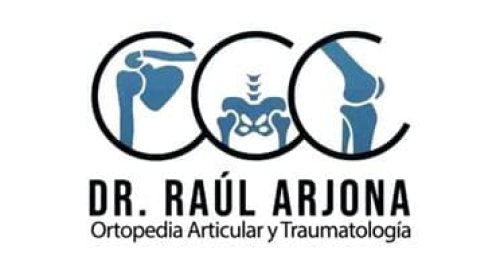Innovations in Rheumatoid Arthritis Treatment – The Rise of Stem Cell Therapy
Rheumatoid arthritis (RA) is a chronic autoimmune disease that primarily affects the joints, causing inflammation and damage. It is characterized by joint pain, stiffness, swelling, and a progressive loss of joint function. However, RA can also affect other organs and systems in the body.
- Causes: The exact cause of RA is unknown, but it is believed to result from a combination of genetic and environmental factors. It is classified as an autoimmune disease because the immune system mistakenly attacks the body’s own tissues, primarily the synovium (the lining of the joints).
- Symptoms: The most common symptoms of RA include joint pain, swelling, stiffness (especially in the morning or after periods of inactivity), fatigue, and general malaise. The joints affected are usually symmetrical, meaning that if one joint on a particular side of the body is affected, the corresponding joint on the other side is also affected.

Benefits of Stem Cell Treatment for Rheumatoid Arthritis
Stem cell therapy has gained attention as a potential treatment for various medical conditions, including rheumatoid arthritis (RA). While research is still ongoing, there are several potential benefits associated with stem cell therapy for RA.
- Anti-inflammatory effects: Stem cells, particularly mesenchymal stem cells (MSCs), have the ability to modulate the immune response and reduce inflammation. In RA, the immune system mistakenly attacks the joints, causing chronic inflammation and damage. Stem cell therapy may help reduce this inflammation and provide relief from pain and swelling.
- Tissue regeneration: Stem cells have the unique ability to differentiate into various cell types, including bone, cartilage, and muscle cells. In the context of RA, stem cells can potentially regenerate damaged tissues in the joints, thereby improving joint function and reducing disability.
- Immune system modulation: Stem cells can interact with the immune system in several ways. They can modulate the activity of immune cells, promote the production of anti-inflammatory molecules, and suppress the immune response that contributes to joint damage in RA. This immune-modulating effect may help to restore balance in the immune system and slow down disease progression.
- Pain reduction: Rheumatoid arthritis often causes significant pain and discomfort. Stem cell therapy has the potential to alleviate pain by reducing inflammation, promoting tissue repair, and improving joint function. By addressing the underlying causes of pain, stem cell therapy may offer long-lasting relief for RA patients.
Procedure of Stem Cell Therapy for Rheumatoid Arthritis
Patient Evaluation
The first step is a comprehensive evaluation of the patient’s medical history, physical examination, and diagnostic tests to confirm the diagnosis of rheumatoid arthritis and assess the severity of the condition. The patient’s eligibility for stem cell therapy is determined based on these evaluations.
Stem Cell Collection
Stem cells can be obtained from different sources, including bone marrow and adipose (fat) tissue. If bone marrow is chosen as the source, a needle is used to extract a small amount of bone marrow from the patient’s hip bone under local anesthesia.
Stem Cell Processing
Once the stem cell sample is collected, it is processed in a laboratory to isolate and concentrate the stem cells. The processing may involve removing unwanted components and concentrating the stem cells to obtain a higher number of viable cells.
Stem Cell Injection
The isolated and processed stem cells are then reintroduced into the patient’s body. The method of delivery can vary depending on the targeted joints or tissues. The stem cells may be injected directly into the affected joints or infused intravenously, allowing the cells to circulate throughout the body and target inflamed joints.
Follow-up care
After the stem cell therapy, the patient is closely monitored to evaluate the response to the treatment. Follow-up appointments and assessments are scheduled to track the patient’s progress, monitor any side effects or complications, and make any necessary adjustments to the treatment plan.
Rehabilitation
Depending on the patient’s condition and response to stem cell therapy, a rehabilitation program may be recommended to improve joint function, mobility, and strength. Physical therapy and other supportive measures may be employed to maximize the benefits of the treatment.
Best Rheumatoid Arthritis Treatment Hospitals in the World
America, Cancun, Mexico
America, Cancun, Mexico, Mexico City
America, Juarez, Mexico
Stem Cell Therapy for Rheumatoid Arthritis Success Stories
Don’t wait another day in pain and discomfort. Take action now and join the countless individuals who have found relief and regained their mobility through stem cell therapy. Contact PlacidWay today to learn more about the process, the clinics we work with, and how you can embark on this transformative journey towards a pain-free life.
Frequently Asked Questions
How do stem cells work in treating Rheumatoid Arthritis?
Stem cells have the unique ability to differentiate into various types of cells in the body. When introduced into the joints affected by Rheumatoid Arthritis, these cells can potentially repair damaged tissues, reduce inflammation, modulate the immune response, and promote the regeneration of healthy joint tissue.
Is stem cell treatment a cure for Rheumatoid Arthritis?
Stem cell treatment for Rheumatoid Arthritis is still considered an experimental procedure, and its effectiveness in providing a cure is not yet established. However, it has shown promising results in reducing symptoms, improving joint function, and slowing down the progression of the disease in some cases.
How long does it take to see results from stem cell treatment for Rheumatoid Arthritis?
The timeframe for experiencing results can vary depending on the individual and the severity of the condition. Some patients may start noticing improvements in symptoms within a few weeks, while others may require several months to observe significant changes. It’s important to have realistic expectations and consult with your healthcare provider for personalized guidance.
Who is eligible for stem cell treatment for Rheumatoid Arthritis?
Eligibility for stem cell treatment depends on various factors, including the individual’s overall health, disease progression, and the recommendations of healthcare professionals. Not everyone with Rheumatoid Arthritis may be suitable for this treatment, and a thorough evaluation is necessary to determine eligibility.
What are the 4 stages of rheumatoid arthritis?
Stage 1: Early RA (Mild): In this stage, the disease is considered mild and primarily affects the joints. Symptoms may include joint pain, stiffness, and swelling, but the impact on daily activities is minimal. X-rays or imaging tests may not show any significant joint damage.
Stage 2: Moderate RA: In this stage, RA progresses, causing increased joint inflammation and damage. There may be a greater number of affected joints, including both small and large joints. Joint pain, swelling, and stiffness become more pronounced, affecting daily activities. X-rays may start to reveal signs of joint damage.
Stage 3: Severe RA: At this stage, RA reaches an advanced level, causing significant joint damage and deformity. Multiple joints are affected, and the symptoms become more persistent and severe. Daily activities become increasingly challenging, and joint mobility is significantly impaired. X-rays or imaging tests show extensive joint damage.
Stage 4: End-Stage RA: This stage represents the most severe form of RA. Joint damage and deformity are extensive, leading to significant disability and loss of joint function. The symptoms are persistent and debilitating, impacting a person’s quality of life. In some cases, organs other than joints may be affected. X-rays or imaging tests demonstrate severe joint destruction and deformity.
Request Free Quote








